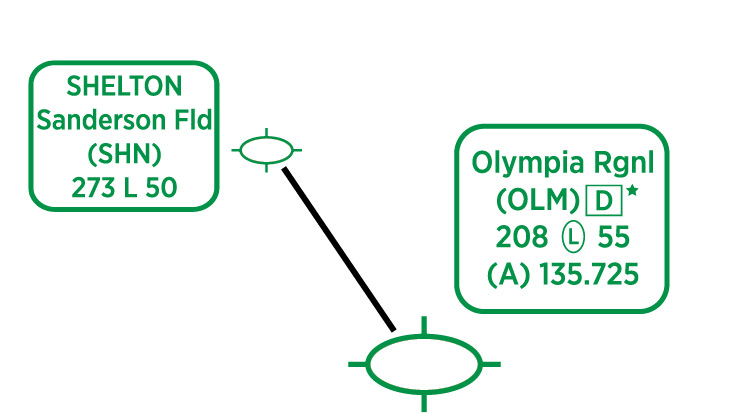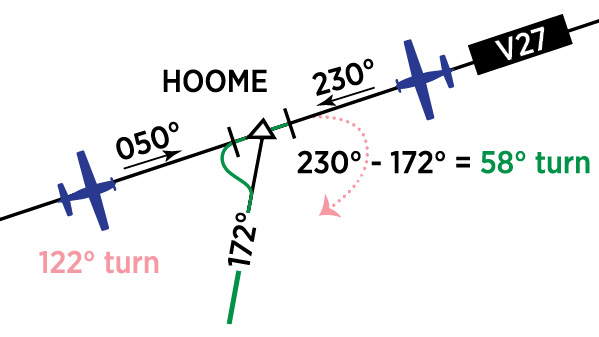What you see
 53 feet Increase in decision altitude when using the remote altimeter setting source (RASS).
53 feet Increase in decision altitude when using the remote altimeter setting source (RASS).
60 feet Increase in minimum descent altitude when using the RASS.
What you don’t
±6,000 feet Maximum elevation difference for a remote altimeter.
75 nautical miles Maximum distance in miles for a remote altimeter.
Flying an approach with the correct altimeter setting is critical. If the airport is 29.89 and you use 30.89, you’ll be 200 feet lower than you should be. If no altimeter setting from the airport is available, the approach might allow use of a remote altimeter setting source (RASS). A RASS more than five miles away, however, requires an adjustment to minimums to allow for a potential difference in air pressure. The limits are 75 miles and 6,000 feet; however, other issues, such as terrain influence, may rule out potential RASS sites.
 What you see
What you see
V27 northeastbound Direction of flight—50 degrees on Victor Airway V27—for which the procedure is not authorized.
What you don’t
120 degrees Maximum degrees of turn from an en route course to join a ground-based navaid approach.
When procedures are not authorized from certain directions, it’s almost always because of the angle of turn required to join the approach. The limit is 120 degrees for ground-based navigation because the assumption is the aircraft will cross the fix and then start the turn. There must be enough protected airspace to allow for the overshoot, and the greater the turn, the greater the overshoot. Only the fastest aircraft would leave protected airspace, even with a tailwind, but the restriction applies to all aircraft equally—even RNAV aircraft that never overshoot.
Jeff Van West is a freelance aviation writer.
 Instrument flying is a numbers game, but sometimes the instrument chart hints at numbers that aren’t there. Fly the ILS or localizer approach to Runway 17 at Olympia, Washington (OLM), and you’ll see—and not see—some numbers that could affect how you fly the approach. These limits are published in the Terminal Instrument Procedures rules, also known as TERPS. In terms of engaging reading, TERPS makes the Aeronautical Information Manual feel like an adventure novel, so here’s a look at some of the numbers behind the numbers.
Instrument flying is a numbers game, but sometimes the instrument chart hints at numbers that aren’t there. Fly the ILS or localizer approach to Runway 17 at Olympia, Washington (OLM), and you’ll see—and not see—some numbers that could affect how you fly the approach. These limits are published in the Terminal Instrument Procedures rules, also known as TERPS. In terms of engaging reading, TERPS makes the Aeronautical Information Manual feel like an adventure novel, so here’s a look at some of the numbers behind the numbers.